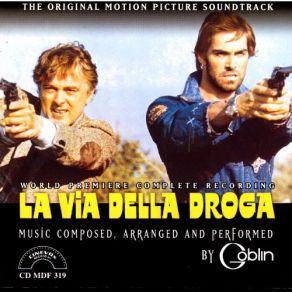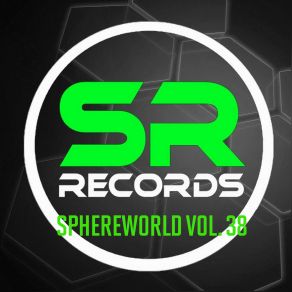Goblin
Wikimp3 information about the music of Goblin. On our website we have 70 albums and 61 collections of artist Goblin. You can find useful information and download songs of this artist. We also know that Goblin represents Theatre/Soundtrack genres.
Biography
[Edit]The fact that Goblin was an Italian progressive rock band already makes them somewhat unique, but they also pursued an intriguingly unorthodox career path, recording the majority of their music for horror film soundtracks, many with director Dario Argento. Internationally, they're probably best-known for their work on the Night of the Living Dead sequel, Dawn of the Dead (where they were credited as the Goblins), though their work on Profondo Rosso (aka Deep Red) and Suspiria is generally more acclaimed.
Formed in 1972, Goblin's roots lie in several other Italian prog-rock bands of the time. Keyboardist and bandleader Claudio Simonetti and original drummer Walter Martino both played in Ritratto Di Dorian Gray; guitarist and sometime vocalist Massimo Morante was part of Era di Acquario; and bassist Fabio Pignatelli had been in Rivelazioni. With vocalist Tony Tartarini, the group initially dubbed itself the Cherry Five and played British-style progressive rock in the vein of Yes, Genesis, and ELP. They signed with the Italian Cinevox label, and issued a self-titled debut in 1975, which performed disappointingly. However, it caught the ear of film director Dario Argento, who contacted Cinevox after growing dissatisfied with the jazzy work being done on his Profondo Rosso by composer Giorgio Gaslini. The Cherry Five rechristened themselves Goblin (in keeping with the horror movie theme), kept a small portion of Gaslini's work, and completely redid the remainder of the score in a heavier, harder-rocking style. The results helped make the film a hit, and the soundtrack album topped the Italian charts. Just as the group was about to begin a supporting tour to consolidate their unexpected success, Martino and Tartarini departed, the former to start his own band (Libra); he was replaced by Agostino Marangolo, who had previously drummed in Flea and Etna.
The quartet's next project was a non-soundtrack album, titled Roller, released in 1976 featuring a more traditional prog-rock sound, as well as second keyboardist Maurizio Guarini. The group, however, was unhappy with both the results and the label's promotional efforts, and nearly disbanded. Intervention by Argento smoothed things over, and he put Goblin to work creating a new soundtrack; this time, he shot the film only after hearing the music. The result, 1977's Suspiria, became Goblin's most acclaimed work, combining the band's heavy riffing and busy drum work with more eerie electronics than ever before, plus sinister, experimental vocal effects. The film and soundtrack were both hits once again, and the Goblin/Argento partnership was firmly established. The band worked on over a dozen film soundtracks over the next two years, and in 1978 used that momentum to record a non-soundtrack concept album in the archetypal prog-rock vein. Titled Il Fantastico Viaggio del Bagarozzo Mark, it told the story of a young boy searching for meaning in life with the help of a philosophical insect named Mark; it also broke with the Goblin norm by featuring lyrics sung in Italian.
Of Goblin's subsequent projects, the most significant was undeniably their work on 1978's Dawn of the Dead (known as Zombi in Italy), the sequel to Night of the Living Dead, co-produced by George Romero and Dario Argento. One of their heavier, more rock-oriented works, the soundtrack appeared in two different versions: one as the complete Italian version used by Argento, and the other as the Romero/American version, which cut down the band's contributions to include stock orchestral music. Regardless, the film and soundtrack were both worldwide successes. In spite of all that, guitarist Morante abruptly left the group for a solo career. Goblin continued as a three-piece for a short time, then added Marangolo's former bandmate, Carlos Pennisi, on guitar. Several more scores followed before keyboardist Simonetti, the driving force behind the band's sound, also departed to become a soundtrack composer in his own right. Bassist Pignatelli took over leadership of the group, but without its two most prominent members, work was suddenly hard to come by. Session keyboardist Maurizio Guarini returned to the fold, but by the time Goblin managed a new studio album, 1982's Volo, both Pennisi and Marangolo had jumped ship as well. Dario Argento attempted to reconvene the original group for the soundtrack of 1982's Tenebre, but Marangolo declined to take part; the presence of Morante, Simonetti, and Pignatelli made the largely electronic Tenebre a Goblin album in all but name (since Pignatelli was leading the official band), and the three went their separate ways afterwards. Pignatelli, Guarini, and Marangolo's saxophonist brother Antonio continued Goblin into 1983, upon which point the group simply faded away. The Goblin name was occasionally resurrected for an attractive project during the rest of the '80s, and rumors of a full-fledged reunion surfaced in the late '90s.
Title: Notturno (Colonna sonora originale del film "Notturno")
Artist: Goblin
Genre: Theatre/Soundtrack
Title: Suspiria (Colonna sonora originale del film Suspiria) - Single
Artist: Goblin
Genre: Theatre/Soundtrack
Title: Their Hits, Rare Tracks & Outtakes Collection Vol. 4
Artist: Goblin
Genre: Rock, Progressive Rock, Theatre/Soundtrack
Title: Colonna Sonora Originale Del Film 'Profondo Rosso' (Original Soundtrack) (CD1)
Artist: Goblin
Genre: Rock, Progressive Rock
Title: The Fantastic Voyage Of Goblin - The Sweet Sound Of Hell
Artist: Goblin
Genre: Electronica, Rock, Progressive Rock, Theatre/Soundtrack
Title: St. Helens
Artist: Goblin
Genre: Electronica, Progressive Rock, Theatre/Soundtrack, Experimental
Title: La via della droga (The Original Motion Picture Soundtrack)
Artist: Goblin
Genre: Rock, Hard Rock, Heavy Metal, Theatre/Soundtrack
Title: Their Hits, Rare Tracks & Outtakes Collection Vol. 2
Artist: Goblin
Genre: Electronica, Rock, Progressive Rock, Theatre/Soundtrack, Experimental
Title: Patrick (The Complete Original Motion Picture Soundtrack)
Artist: Goblin
Genre: Theatre/Soundtrack
Title: Suspiria (Colonna sonora originale del film)
Artist: Goblin
Genre: Rock, Hard Rock, Heavy Metal, World Music, Theatre/Soundtrack
Title: La Via Della Droga
Artist: Goblin
Genre: Rock, Hard Rock, Metal, World Music, Theatre/Soundtrack, Progressive
Title: La Venganza De La Reina Anna - Single
Artist: Goblin, Henrique Camacho
Genre: Electronica, Techno, Dancefloor, Dance Pop
Title: Il fantastico viaggio del bagarozzo mark
Artist: Goblin
Genre: Rock, Hard Rock, Heavy Metal, World Music
Title: Zombi (Gold Tracks) [Colonna sonora originale del film]
Artist: Goblin
Genre: Theatre/Soundtrack
Title: Roller
Artist: Goblin, Claudio Simonetti
Genre: Rock, Hard Rock, Heavy Metal, Theatre/Soundtrack
Collections
Title: Minimal Commander Vol.1
Genre: House, Dancefloor, Dance Pop
Title: Argento Vivo
Genre: Theatre/Soundtrack
Title: 20 Italian Sci-Fi Themes
Genre: Theatre/Soundtrack
Title: Mind Games Therapy Vol.5
Genre: Electronica, Dancefloor, Dance Pop
Title: Criminale
Genre: Theatre/Soundtrack
Title: 28 Songs Later
Genre: Pop
Title: Beat, Vol. 1 (Lounge at Cinevox)
Genre: Theatre/Soundtrack
Title: Argento vivo
Genre: Theatre/Soundtrack
Title: Cinevox: the History of Soundtracks
Genre: Theatre/Soundtrack
Title: Puro argento vivo
Genre: Theatre/Soundtrack
Title: 40 Scary Themes from Horror Movies
Genre: Theatre/Soundtrack
Title: Argento vivo, Vol. 2
Genre: Theatre/Soundtrack
Title: Terrordrome
Genre: Theatre/Soundtrack
Title: Cinevox Countdown to Halloween
Genre: Theatre/Soundtrack
Title: Argento vivo (Extended)
Genre: Theatre/Soundtrack
Title: Club At Work
Genre: Electronica, Dancefloor, Dance Pop
Title: Sorry I'm Minimal, Vol. 2
Genre: House, Dancefloor, Dance Pop
Title: Minimal Techno Picks, Vol. 5
Genre: House, Dancefloor, Dance Pop
Title: Sexiest Minimal, Vol. 7 - Winter Edition
Genre: House, Dancefloor, Dance Pop
Title: Be Massive! Vol.1
Genre: Electronica, Dancefloor, Dance Pop
Title: Decide Between Minimal!
Genre: House, Dancefloor, Dance Pop
Title: Massive Minimal Entrance Vol. 5
Genre: House, Dancefloor, Dance Pop
Title: We Select the Music, Vol. 6: Underground Minimal
Genre: House, Dancefloor, Dance Pop
Title: Profondo rosso - il musical
Genre: Theatre/Soundtrack
Title: Zarathustra's Revenge (CD3)
Genre: Rock
Title: Shaun Of The Dead (Original Soundtrack)
Genre: Electronica, Rock, Theatre/Soundtrack
Title: 70s @ Cinevox (Original Soundtrack)
Genre: Theatre/Soundtrack, Instrumental
Title: Fabric 49: Magda
Genre: Electronica, House, Techno
Title: The Night Society Vol. 6: 25 Deep-House Tunes
Genre: Deep House
Title: Dominator 2015 Riders Of Retaliation (CD1)
Genre: Hardcore
Title: Merry Minimal Christmas Vol. 2
Genre: Tech House, Hip Hop/R&B
Title: Minimal Desire
Genre: Minimal Techno
Title: The Urban History
Genre: Trance, Dancefloor, Dance Pop
Title: Techno Consequences 2017
Genre: Techno
Title: Disco Summer Mix Solar Top 100 (CD2)
Genre: Dancefloor, Disco, Pop, Dance Pop
Title: Minimal Techno Shredders 2017
Genre: House, Deep House, Tech House
Title: Progressive Grain 2017
Genre: House, Deep House, Tech House
Title: Minimal Techno En 2017
Genre: House, Deep House, Techno, Tech House, Dancefloor, Dance Pop
Title: Hard Fitness Dance Music (CD1)
Genre: Pop
Title: Hardstyle Dance: Fitness Energetic Sounds (CD3)
Genre:
Title: Psychedelic Journey, Vol. 2
Genre: Trance
Featuring albums
Title: La Chiesa (Original Motion Picture Soundtrack)
Artist: Various Artists
Genre: Theatre/Soundtrack
Title: Cinevox Best B-sides (Top 100 Tracks from the Label's 45rpms)
Artist: Various Artists
Genre: Theatre/Soundtrack
Title: Dominator the Hardcore Festival (Riders of Retaliation)
Artist: Various Artists
Genre: Dancefloor, Dance Pop, Hardcore
Title: Unleash the Beast (Uptempo Hardcore Part One)
Artist: Various Artists
Genre: Dancefloor, Dance Pop, Hardcore
Title: Warehouse Anthems: Minimal, Vol. 14
Artist: Various Artists
Genre: House, Dancefloor, Dance Pop
Title: Essential Guide: Minimal, Vol. 2
Artist: Various Artists
Genre: House, Techno, Dancefloor, Dance Pop
Title: Minimum Addiction Summer Selection
Artist: Various Artists
Genre: Techno, Dancefloor, Dance Pop
Title: Maximal Minimal, Vol. 4: Bass Monsters
Artist: Various Artists
Genre: House, Dancefloor, Dance Pop
Title: Mental Music Essentials, Vol. 1
Artist: Various Artists
Genre: House, Techno, Dancefloor, Dance Pop
Title: LateNightTales - Matt Helders
Artist: Clutchy Hopkins
Genre: Downtempo, Soul, Jazz, Instrumental
Title: LateNightTales - Matt Helders
Artist: Matt Helders
Genre: Electronica, Hip Hop/R&B, Rock, Pop, Instrumental
Title: Illumination Music, Vol. 6.
Artist: Various Artists
Genre: House, Dancefloor, Dance Pop, Hardcore
Title: Wonder of Manchester, Vol. 43
Artist: Various Artists
Genre: Electronica, Techno, Dancefloor, Dance Pop
Title: Cell Block Ent. Presents Affiliated From the Streets To the Pin
Artist: Various Artists
Genre: Hip Hop/R&B, Rap, Punk Rock
Title: Clubbers Culture: Access of Minimal Power
Artist: Various Artists
Genre: House, Dancefloor, Dance Pop








































































































































































































